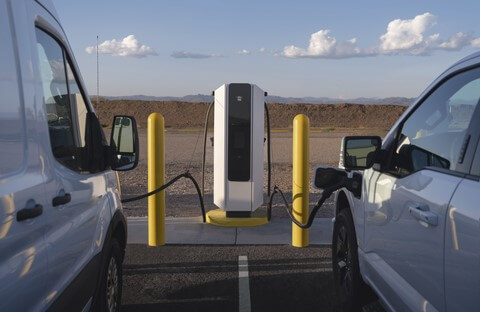The city of Dallas — America’s fourth-largest metro area — selected Ford’s commercial division, Ford Pro, to help move the Texas city’s climate goals forward, aiming to improve air quality through electrifying the city’s vehicle fleet by 2040.
Ford Pro and the city of Dallas entered a 10-year agreement to grow and manage electric vehicle charging infrastructure for the city’s fleet operations. As part of the agreement, the city of Dallas will install Ford Pro chargers at city worksites and use Ford Pro smart charging software to customize and manage EV charging performance. Through the integrated software and hardware solution, Dallas can help ensure its fleet vehicles are charged optimally and ready for work when they need them.
In 2020, the city approved a Comprehensive Environmental & Climate Action Plan (CECAP) that includes efforts to reduce carbon emissions, in part by installing EV chargers throughout the city and adding light-duty EVs to the city fleet of 5,400 vehicles.
“The city of Dallas is committed to a clean, safe, and healthy environment, and we’re making great strides in our efforts to reduce emissions and improve air quality,” says Dallas Mayor Eric L. Johnson. “This agreement with Ford Pro marks a significant milestone and will help our city avoid energy waste and save money on energy costs. We look forward to building upon our work with Ford Pro to further scale EV charging infrastructure and electrify our fleet operations to continue to serve our great city now and in the future.”
“EV adoption is on the rise with state and local government fleets, and we’re proud to provide smart charging software and hardware to help electrify one of the Lone Star State’s biggest cities in one of America’s biggest metro areas,” adds Ford Pro CEO Ted Cannis. “The impact software can have on EV charging can be substantial, helping public agencies like the city of Dallas not only manage charging infrastructure today, but help determine where chargers may be needed in the future.”

